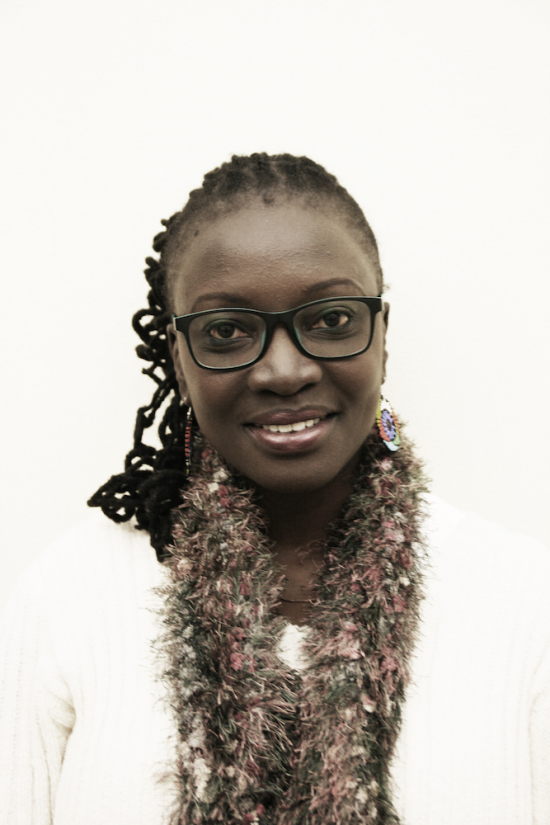“I’m a paediatric ophthalmologist of the Sabatia Eye Hospital in Kenya. When I arrived in this hospital in 2011, I was just an ophthalmologist eager to start a new specialization, but then I discovered how much I liked the paediatric clinic, maybe because I was taken by surprise by the great number of children affected by eye diseases that got there. Therefore, after choosing my specialization, I was quickly trained by Doctor Ollando to operate the cataract, and we performed surgery on 250 kids in 2012. In 2013 we both travelled to further specialise and when we got back the numbers had escalated. The rumour spread in the area, even our colleagues in the nearby regions sent us the children that needed surgery. I think that this change was favoured by the fact that the Paediatric Clinic was located inside the hospital and that we organised fixing a day of the week for performing surgery, but above all by our constant and enthusiastic commitment, and the training that involved visiting even the most remote areas to talk about the cataract: how to prevent, cure and identify it. Before 2013 we operated the patients and then demanded to see them for regular check-ups. Now we are better organised and after the operation they can address doctors closer to where they live. The rumour of our positive results spread around, and the number of our patients is increasing.
CBM supports our programme and another project specifically addressed to children: “Seeing is believing”. The Sabatia Eye Hospital was founded 20 years ago and since its opening CBM has been one of its main partners. During these years their way of supporting us has changed: at first they looked for and payed the doctors that would come to Africa, because the hospital was short of staff, and helped us in every aspect; now they encourage us to be more independent, by simply donating a budget to the hospital and letting us carry on the programme by ourselves. This allows us to think through every decision carefully, especially how to distribute the funds, and therefore to be more self-sufficient. At the same time, however, CBM reinforced its partnership and now they finance patients’ surgery as well as the eyeglasses they will have to wear, the assistance to the visually impaired and their integration in school classes. Now, the kids that have undergone surgery come back to receive their glasses and information about specialised schools – that’s great! There are 1.4 million blind children in the world and 90% of them lives in the low-income countries.”
Doctor Sarah Sitati
I’ve met Sarah at the BLIND DATE concert organised by CBM Italia in Turin on November 14. She was standing on the side, with the ILLUSTRATI #BLIND issue in her hand, and she told me that she liked the magazine and that she would be pleased to receive it. At the end of the concert a CBM supporter who had attended Sarah’s presentation that same afternoon, asked her to step on the stage, and thanked her. The day after, we had lunch together in Bologna to record these few words before her meeting with the students of the International School of Bologna. I would like to describe my favourite moment of my encounter with an intelligent, open-minded and curious woman, who visited Italy for the first time, and who asked me if all the African people in the city centre were begging for money. A woman who described me a different Africa from the one I’m used to hear about. A woman with whom I immediately engaged in a friendly relationship through one of those ladies’ intimate conversations, that in my experience I’ve only had with people that live or have lived in developing countries, as they call them here, a conversation that I will not report here… We were in Piazza Maggiore. The square still dirty with the snow of the previous Monday, the grey sky. Sarah dressed in white and smiled, her smile being white as well, and the municipal clock behind her. She told me: “When you live in Europe, or in America, you believe you can save the world, until you go to Africa and you realise that it’s impossible. When you live in Africa instead, like I do, you know that you cannot change everything, but only one thing at a time. I’ve adopted a six-months-old baby and now she’s five; in Kenya it’s quite easy for the locals to adopt a child and there’s plenty in need of help; I also support school education for three more children who don’t live with me. I cannot help everyone, but someone I can.”
NOTE: 14% of the world population lives in Africa. Of about 1.2 billion people, 4.8 million are blind and 16.6 million are visually impaired, an extremely high ratio if compared to other continents. The 80% of times the disease can be prevented or cured. In Africa blindness is mainly caused by cataract, glaucoma, trachoma and paediatric blindness (due to vitamin A deficiency). Cataract is the main cause of blindness in the world. The eye crystalline lens progressively turns opaque, preventing the light to filter in; this leads to a gradual sight loss. Cataract is mostly a consequence of aging, but also excessive exposure to sun rays and malnutrition are related to the high number of people suffering from cataract in Africa. The only solution is surgery, meaning the removal of the opaque crystalline lens and the application of an artificial lens. Surgery is not expensive, but is highly effective, although it is not accessible to everyone, and the same goes for the prevention information and the designed structures.
